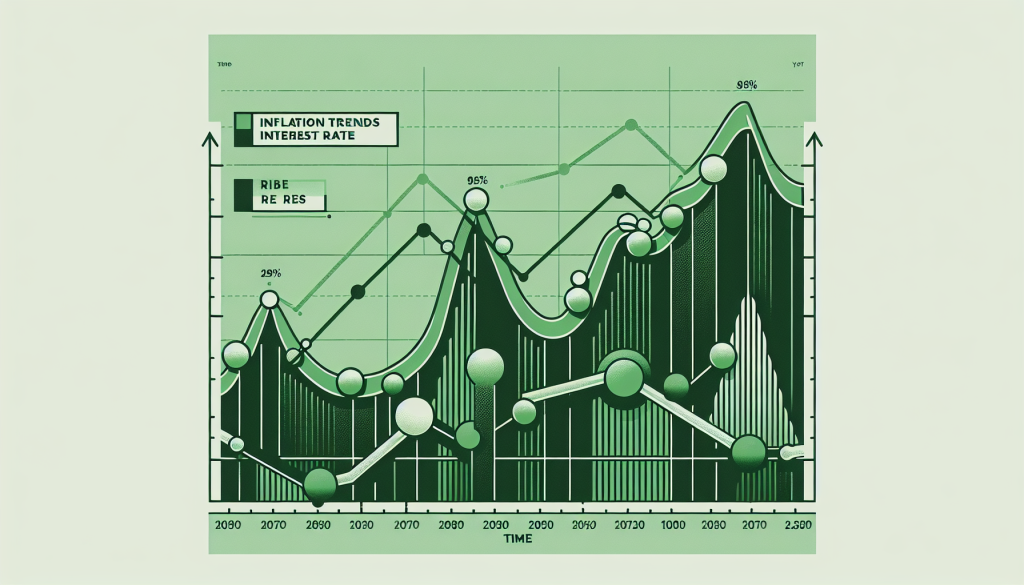
Understanding the downward trend of inflation
Inflation, a key economic indicator, has been on a downward trend for the past eight months. This continued decline in inflation is an important economic event with far-reaching implications for both the domestic and global economy. Recently, however, inflation has ceased its downward trajectory and instead moved sideways. This stagnation in inflation rates has sparked a flurry of speculation and betting on the market, especially in relation to lower interest rates.
The role of interest rate cuts
Lowering interest rates is a monetary policy tool used by central banks to stimulate economic growth. When the economy is slow, central banks may lower interest rates to encourage borrowing and investment, thereby boosting economic activity. The market's betting activities are a reflection of its expectations regarding future economic policies, including interest rate cuts.
Market forecasts and economic growth
Six months ago, when the current economic rally began, the market was betting six interest rate cuts. This was a bold prediction, considering the potential implications of such a drastic measure. However, it was not entirely unfounded. The downward trend of inflation suggested a slowdown in the economy, which could justify a number of interest rate cuts to stimulate growth.
Skepticism and controversy
However, the market's forecast of six interest rate cuts was met with skepticism. Many experts argued that such a drastic measure was unnecessary and could destabilize the economy. Despite the downward trend in inflation, the economy was still growing, albeit at a slower pace. Therefore, six interest rate cuts seemed excessive and potentially harmful.
Changing economic landscape
Fast forward to the present, and market betting has changed significantly. The current forecast is for three interest rate cuts, a significant reduction from the previous forecast of six. This change in betting is a reflection of the changing economic landscape. Inflation, which had been on a downward trend, is now stagnant and moving sideways. This suggests that the economy is stabilizing and therefore does not require as much interest rate cuts to stimulate growth.
The debate over the number of interest rate cuts
However, the forecast for three interest rate cuts is not without controversy. Some argue that it is still too high, given the current state of the economy. They argue that the sideways movement of inflation is a sign of economic stability rather than stagnation. Therefore, three interest rate cuts could overstimulate the economy and lead to inflationary pressures.
Proponents of three interest rate cuts
On the other hand, proponents of the three interest rate cuts argue that they are necessary to ensure continued economic growth. They argue that while inflation has stopped in decline, has not started to grow. This suggests that the economy is still sluggish and could benefit from further stimulus.
Conclusion: The complexity of reducing inflation and interest rates
In conclusion, the dynamics of reducing inflation and interest rates is complex and multifaceted. Market betting activities provide valuable insight into expected future economic policies and the state of the economy. However, these predictions are not always accurate and should be taken with caution. Current forecast of three the decline in interest rates is a reflection of the change economic landscape, but it is not without controversy. As always, the future of the economy remains uncertain and only time will tell if these predictions will come true.
Frequently asked questions
Q. What is the current inflation trend?
Inflation has been on a downward trend for the past eight months, but has recently ceased its downward trajectory and instead moved sideways.
Q. What is the role of interest rate cuts?
Lowering interest rates is a monetary policy tool used by central banks to stimulate economic growth. They encourage borrowing and investment, thereby stimulating economic activity.
Q. What were the market's initial predictions about the interest rate cut?
Six months ago, the market was betting on six interest rate cuts, a forecast based on the downward trend in inflation.
Q. How have market forecasts changed?
The current forecast is for three interest rate cuts, a significant reduction from the previous forecast of six. This change is a reflection of the changing economic landscape.
Q. Why is there controversy over the forecast of three interest rate cuts?
Some argue that three interest rate cuts are too high, given the current state of the economy. They believe that the sideways movement of inflation is a sign of economic stability, not stagnation, and that these cuts could overstimulate the economy.
Q. What is the argument for three interest rate cuts?
Proponents argue that the cuts are necessary to ensure continued economic growth. They believe that while inflation has stopped falling, it has not started to rise, suggesting the economy could benefit from further stimulus.
Q. How should we interpret market forecasts?
of market betting activities provide valuable insight into the expected future economic policies and the state of the economy. However, these predictions are not always accurate and should be taken with caution. The future of the economy remains uncertain.
Post Decoding inflation trends and interest rate cuts appeared first on Because.
